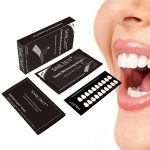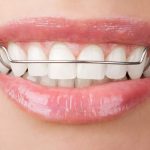Teeth Whitening Made Easy: Discover the Safe Frequency for a Brighter Smile
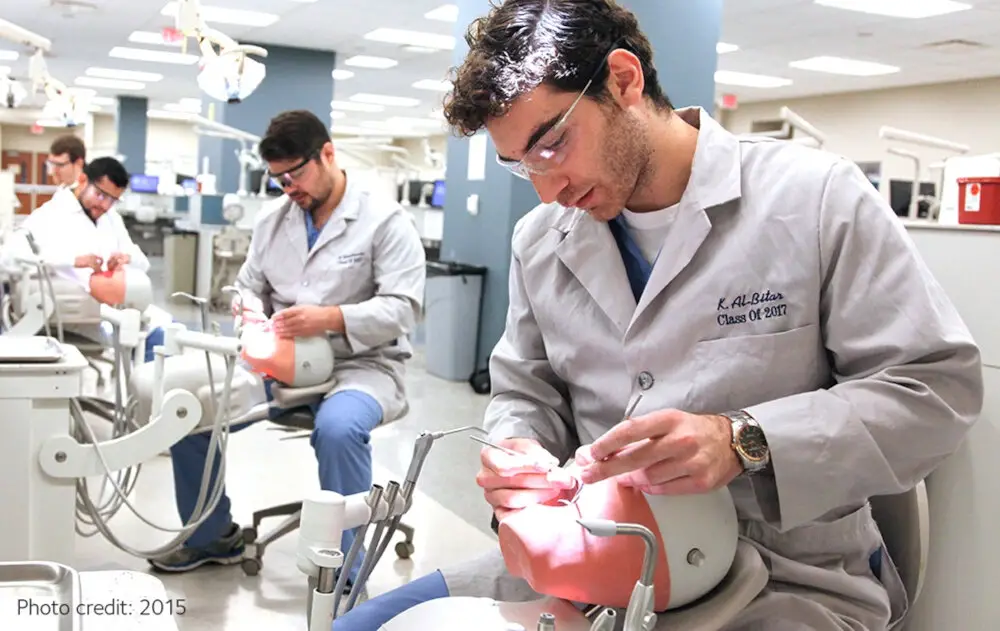
A dazzling smile can make a world of difference. It can boost your confidence, improve your mood, and enhance your overall appearance. But, with time and lifestyle habits like smoking and drinking coffee or wine, our teeth can become stained and discolored. That’s where teeth whitening comes in. Teeth whitening has become increasingly popular in recent years, but with so many options available, it can be overwhelming to decide which method to use and how often to use it. In this article, we’ll explore the safe frequency for teeth whitening to help you achieve a brighter, more confident smile. Before diving into the safe frequency for teeth whitening, it’s important to understand how teeth become stained in the first place. The outer layer of our teeth, known as enamel, is porous and can absorb pigments from food, drinks, and other substances. Over time, these pigments build up and cause discoloration. While regular brushing and flossing can help remove surface stains, teeth whitening treatments can penetrate the enamel to remove deeper stains and restore your teeth’s natural whiteness.
Teeth whitening is a cosmetic procedure that aims to lighten the color of your teeth, making them look brighter and more attractive. This process can be done using various methods such as bleaching agents, laser treatments, or even natural remedies. Teeth whitening has become increasingly popular in recent years due to its ability to significantly improve the appearance of your teeth, boost your confidence, and enhance your overall smile. However, it is important to note that teeth whitening should always be done under the guidance of a dental professional to ensure its safety and effectiveness. By choosing the right method and frequency of treatment, you can achieve a brighter smile that will leave a lasting impression.
Having a bright and radiant smile can boost your self-confidence and make you feel more attractive. Teeth whitening is a simple and effective way to achieve that brighter smile. Over time, teeth can become discolored due to various factors such as age, smoking, drinking coffee, tea, or red wine, and poor oral hygiene. Teeth whitening can remove those surface stains and restore the natural color of your teeth, giving you a more youthful appearance. Moreover, a brighter smile can also make you look more approachable and friendly, which can help in both personal and professional settings. With easy and safe teeth whitening methods available, there’s no reason to settle for a dull smile.
Understanding Teeth Discoloration

Teeth discoloration is a common dental problem that can affect anyone at any age. It is characterized by the yellowish or brownish staining of the teeth, which can be caused by a variety of factors including poor oral hygiene, smoking, aging, genetics, and certain foods and drinks. Tooth enamel can also become discolored due to exposure to certain medications, such as tetracycline, or due to trauma or injury to the teeth. Understanding the causes of teeth discoloration is crucial for determining the best course of treatment to achieve a brighter and whiter smile. There are two main types of teeth discoloration: extrinsic and intrinsic. Extrinsic discoloration affects the outer layer of the tooth, or enamel, and is often caused by external factors such as smoking, coffee, tea, red wine, and other foods and drinks that can stain the teeth. Intrinsic discoloration, on the other hand, affects the inner layer of the tooth, or dentin, and can be caused by factors such as aging, genetics, or exposure to certain medications. In some cases, a combination of extrinsic and intrinsic factors can contribute to teeth discoloration, making it more challenging to treat. By understanding the underlying causes of teeth discoloration, individuals can work with their dentist to develop a personalized treatment plan to achieve a brighter and whiter smile.
There are several types of teeth discoloration that can occur, which can lead to an unsightly smile. One type is extrinsic discoloration, which is caused by external factors such as smoking, drinking coffee or tea, or consuming certain foods. Another type is intrinsic discoloration, which occurs within the tooth itself and can be caused by factors such as aging, genetics, or certain medications. Additionally, there is a type of discoloration called fluorosis, which is caused by excessive exposure to fluoride during tooth development. Finally, there is tetracycline staining, which occurs when antibiotics are taken during tooth development and can cause a grayish tint to the teeth. Understanding the type of discoloration you have is important in determining the best course of action for achieving a brighter, whiter smile.
Teeth discoloration can be caused by a variety of factors, both extrinsic and intrinsic. Extrinsic factors include consumption of highly pigmented foods and beverages like coffee, tea, red wine, and cola, as well as smoking and poor oral hygiene. On the other hand, intrinsic factors include genetics, aging, and certain medications such as antihistamines, antibiotics, and chemotherapy drugs. In addition, trauma or injury to the teeth and excessive fluoride intake can also cause discoloration. It’s important to identify the root cause of the discoloration before seeking any teeth whitening treatments as some causes may require a different approach to treatment.
Teeth whitening works by using a bleaching agent, typically hydrogen peroxide or carbamide peroxide, to remove stains and discoloration from the surface of teeth. The bleaching agent penetrates the enamel and breaks down the molecules that cause the discoloration, leaving behind a brighter, whiter smile. There are several methods of teeth whitening, including in-office procedures, at-home treatments, and over-the-counter products. While all methods are effective to varying degrees, it’s important to choose a safe frequency and follow the instructions carefully to avoid damaging the enamel or irritating the gums. With regular use, teeth whitening can help maintain a brighter, more youthful-looking smile.
Choosing a Teeth Whitening Product

Choosing a teeth whitening product can be an overwhelming task, given the numerous options available on the market. However, it is essential to choose the right product that suits your needs and preferences. First and foremost, you should consider the type of stain that you want to remove. If you have surface stains caused by food, beverages, or smoking, then over-the-counter whitening products such as toothpaste, strips, and gels may work well for you. However, if your teeth have deep-set stains or discoloration caused by medication or genetics, then professional teeth whitening treatments may be more effective. Another consideration when choosing a teeth whitening product is the concentration of the active ingredient. Most whitening products use hydrogen peroxide or carbamide peroxide as the active ingredient, and the concentration of these ingredients can vary from 10% to 44%. While higher concentrations can whiten teeth faster, they may also increase the risk of tooth sensitivity and damage to the enamel. It is, therefore, advisable to choose a product with a lower concentration of the active ingredient and use it more frequently over a longer period for safe and effective results. Additionally, you should always read and follow the instructions carefully to avoid any adverse effects and achieve the desired outcome.
There are various types of teeth whitening products available in the market, ranging from over-the-counter options to professional treatments. Whitening toothpaste is one of the most common and affordable options. It contains mild abrasives that remove surface stains. Whitening strips and trays are also popular, and they typically use hydrogen peroxide to bleach teeth. Whitening pens are another option that is easy to use and convenient for touch-ups. Professional treatments, such as in-office bleaching and at-home custom trays, are the most effective but also the most expensive. It’s important to note that not all teeth whitening products are created equal, and some may cause sensitivity or damage to the teeth and gums if used improperly.
When it comes to teeth whitening products, there are certainly pros and cons to each option. One of the biggest pros of using over-the-counter whitening strips or gels is their convenience and affordability. They can be purchased easily at most drugstores and used in the comfort of your own home. However, some people may experience sensitivity or gum irritation from these products. Professional whitening treatments, on the other hand, are much more effective and can provide quicker results. However, they are more expensive and require a visit to the dentist’s office. It’s important to weigh the pros and cons of each product and choose the option that works best for your individual needs and budget.
Choosing the right teeth whitening product can be overwhelming with so many options available in the market. However, it’s essential to consider some important factors before making a purchase. First, check the ingredients and ensure they are safe for your teeth. Look for products with hydrogen peroxide or carbamide peroxide as they are effective in removing stains without causing harm. Second, consider the sensitivity of your teeth and choose products that cater to this. Third, check the frequency of use recommended by the manufacturer and ensure it fits into your lifestyle. Finally, consider the price and value for money. By considering these factors, you can pick a teeth whitening product that suits your needs and helps you achieve a brighter, healthier smile.
Safe Frequency for Teeth Whitening

Teeth whitening is a popular cosmetic dental procedure that helps to remove stains and discoloration from the teeth. While it is an effective way to achieve a brighter smile, it is important to understand that there are limits to how often you can safely whiten your teeth. The safe frequency for teeth whitening varies depending on the method used and the individual’s teeth and oral health. As a general rule, it is recommended to whiten your teeth no more than once every six months. Excessive teeth whitening can damage your tooth enamel, causing it to erode or become thin. This can lead to increased tooth sensitivity, gum irritation, and even tooth decay. Overuse of teeth whitening products can also damage the soft tissues of your mouth, such as your gums and tongue. It is important to follow the instructions provided by your dentist or the manufacturer of the whitening product to avoid these risks and achieve optimal results. If you experience any discomfort or sensitivity during or after teeth whitening, it is best to consult your dentist to ensure that your teeth and oral health are not being compromised.
While having a bright, white smile is highly desirable, overwhitening teeth can lead to potential risks. Excessive use of teeth whitening products can result in tooth sensitivity, gum irritation, and even damage to tooth enamel. Furthermore, overwhitening may cause teeth to appear unnaturally white and give an artificial appearance. It is important to follow recommended usage guidelines and consult a dental professional before attempting any teeth whitening procedures. A safe and effective approach is to use teeth whitening products in moderation and with caution to avoid any potential risks.
Teeth whitening is an effective and popular cosmetic dental procedure that can help individuals achieve a brighter and more attractive smile. However, it is important to understand the recommended frequency for teeth whitening to ensure that it is done safely and without causing any damage to the teeth or gums. According to dental experts, teeth whitening should be done no more than once every six months to a year, depending on the individual’s oral health and hygiene habits. Overuse of teeth whitening products or procedures can lead to tooth sensitivity, gum irritation, and even damage to the enamel. Therefore, it is crucial to consult with a dental professional before undergoing any teeth whitening treatment and to follow their recommendations for the safest and most effective results.
Determining the right frequency for teeth whitening is crucial to achieve a brighter and healthier smile. It is recommended to consult with a dentist and perform a patch test before starting any teeth whitening treatment. The frequency of teeth whitening treatments varies depending on the strength of the whitening agent and the sensitivity of the teeth. Dentists usually recommend performing teeth whitening every six months, but this can be adjusted based on the individual’s needs and preferences. Overusing teeth whitening products can cause tooth sensitivity, gum irritation, and enamel damage, so it’s important to follow the recommended frequency and instructions to avoid any potential harm. A balanced approach to teeth whitening can lead to a brighter, healthier, and more confident smile.
AtHome Teeth Whitening Tips
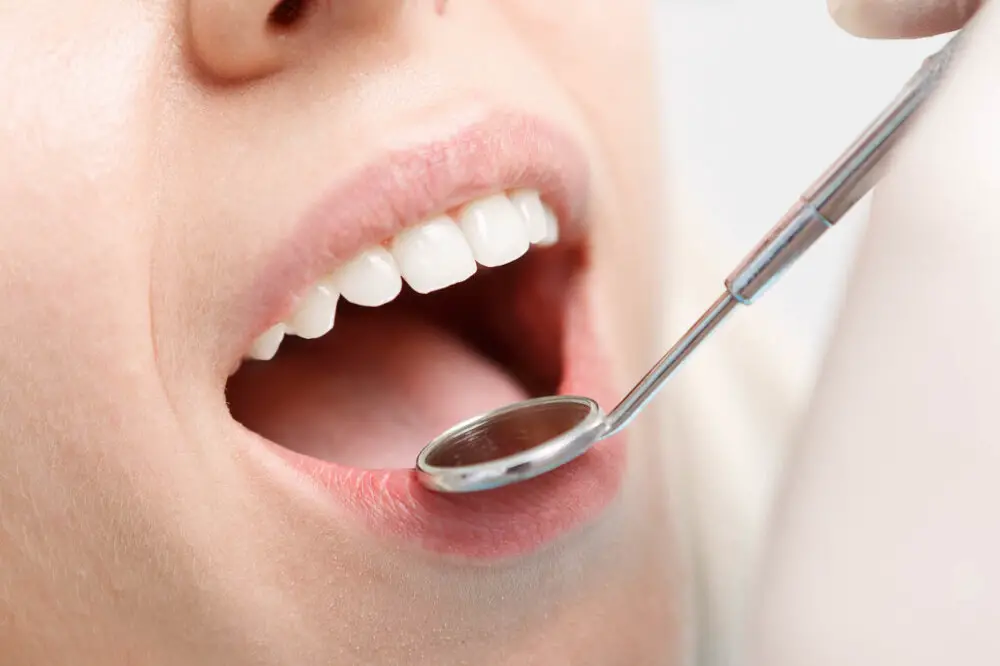
If you want a brighter smile but don’t want to pay for expensive teeth whitening treatments, there are several at-home teeth whitening tips you can try. First, consider changing your diet to include more fruits and vegetables. Foods like strawberries, apples, and carrots contain malic acid, which can help remove surface stains on teeth. Additionally, crunchy fruits and vegetables can help scrub away plaque and debris that can contribute to discoloration. Another at-home teeth whitening tip is to use baking soda as a natural toothpaste. Baking soda has mild abrasive properties that can help remove surface stains on teeth. Mix a small amount of baking soda with water to make a paste, then brush your teeth with it for a minute or two before rinsing. Be careful not to use too much baking soda, as it can be abrasive and damage tooth enamel over time. These at-home teeth whitening tips can help you achieve a brighter smile without breaking the bank.
There are a variety of natural remedies that can be used for teeth whitening. One popular option is baking soda, which can be mixed with water to create a paste that can be applied to the teeth. Another option is using hydrogen peroxide, which can be diluted with water and used as a mouthwash. Additionally, oil pulling with coconut oil has been shown to help whiten teeth, and consuming foods high in vitamin C can also help to remove plaque and stains. While these remedies can be effective, it’s important to remember that they may not work for everyone, and professional teeth whitening treatments may be necessary for more stubborn stains.
Maintaining white teeth is essential for a confident smile. To achieve this, one must practice good oral hygiene, including regular brushing, flossing, and rinsing with mouthwash. It is also important to limit the intake of stain-causing foods and beverages, such as coffee, tea, red wine, and dark-colored fruits. One can also opt for whitening toothpaste or visit a dentist for professional teeth whitening treatments. However, it is important to be cautious with the frequency of whitening treatments, as overusing them can damage the enamel and cause sensitivity. By following these tips, one can maintain their white teeth and achieve a brighter smile without compromising their oral health.
When it comes to whitening your teeth at home, there are some common mistakes that you should avoid. Firstly, using too much whitening gel can cause sensitivity and irritation to your gums. It is important to follow the instructions provided by the manufacturer and use the recommended amount of gel. Secondly, using whitening strips that are not designed for your teeth can lead to uneven results and damage to the enamel. It is important to choose the right type of whitening strip that matches the shape and size of your teeth. Lastly, over-whitening can cause your teeth to become translucent and look unnatural. It is important to follow the recommended frequency and not to exceed the recommended time for whitening to avoid any side effects. By avoiding these common mistakes, you can achieve a brighter smile safely and effectively.
Teeth whitening is an important process for maintaining good oral hygiene and a bright, confident smile. Regular consumption of coffee, tea, and other staining foods can lead to discoloration, which can make teeth appear dull and unattractive. In addition, smoking, aging, and certain medications can also cause teeth to yellow or darken. By utilizing safe and effective teeth whitening techniques, individuals can remove these stains and restore their teeth to their natural, beautiful shade. Not only does this enhance the appearance of teeth, but it can also improve overall dental health, as whiter teeth are easier to clean and maintain. With proper care and attention, a bright, healthy smile can be achieved and maintained for years to come.
Teeth whitening is a popular cosmetic dental procedure that can provide a brighter and more attractive smile. However, it is important to do it safely and avoid any potential harm to your teeth and gums. The safe frequency for teeth whitening depends on the method used and the strength of the whitening agent. Generally, it is recommended to limit the frequency of teeth whitening to once every 6 months to a year. Overusing whitening products or exposing your teeth to high concentrations of whitening agents can cause enamel damage, tooth sensitivity, and gum irritation. Therefore, it is essential to follow the instructions provided by your dentist or the whitening product manufacturer to achieve the best results without compromising your oral health.
In conclusion, achieving a brighter smile is not rocket science, but it does require consistency and patience. Firstly, maintain good oral hygiene by brushing your teeth at least twice a day and flossing regularly to prevent staining. Secondly, reduce the frequency of consuming foods and drinks that are known to stain teeth, such as coffee, tea, red wine, and berries. Lastly, consider using teeth whitening products, but be cautious with their frequency and concentration. Overuse of these products can cause sensitivity and damage to the enamel. It is advisable to consult your dentist and follow their recommendations for a safe and effective teeth whitening routine. By following these simple steps, you can achieve a brighter, healthier smile that will boost your confidence and leave a lasting impression.
Conclusion
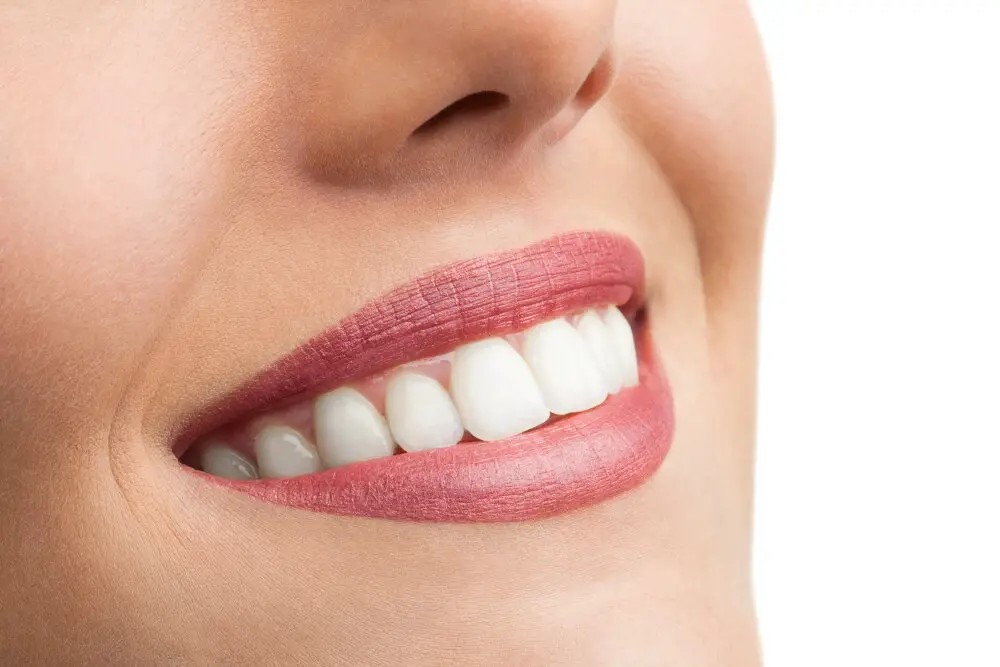
In conclusion, achieving a brighter smile through teeth whitening is possible and safe if done in moderation and with proper guidance. Knowing the safe frequency and duration of teeth whitening treatments can help prevent potential damage to the teeth and gums. It is important to consult with a dental professional before undergoing any whitening procedure to ensure that it is appropriate for your individual needs. Additionally, maintaining good oral hygiene habits and avoiding habits that contribute to tooth discoloration can also help keep your smile bright and healthy. With the right approach, a brighter, healthier smile is within reach for anyone.

